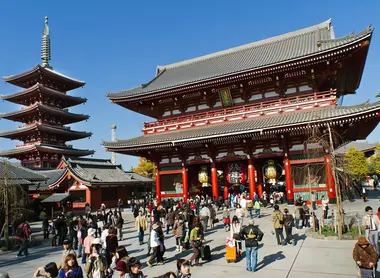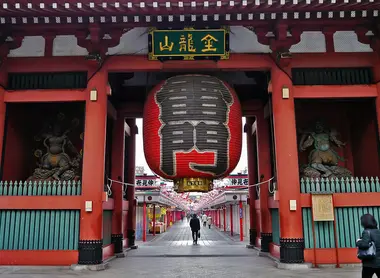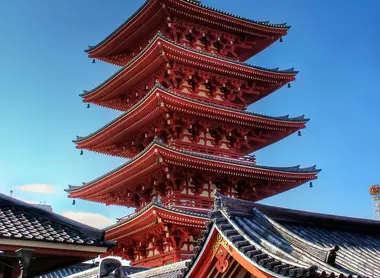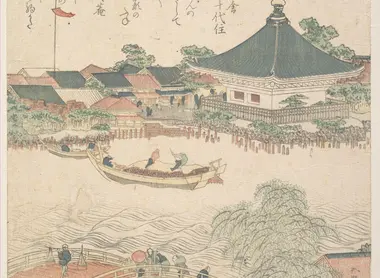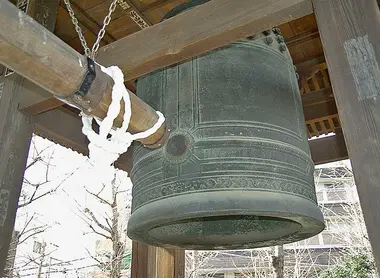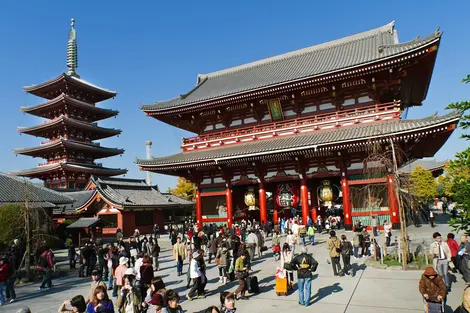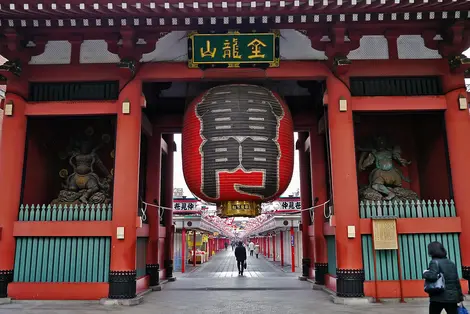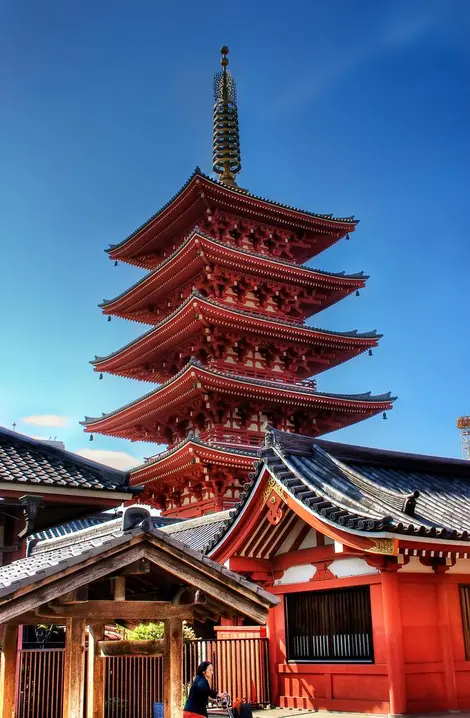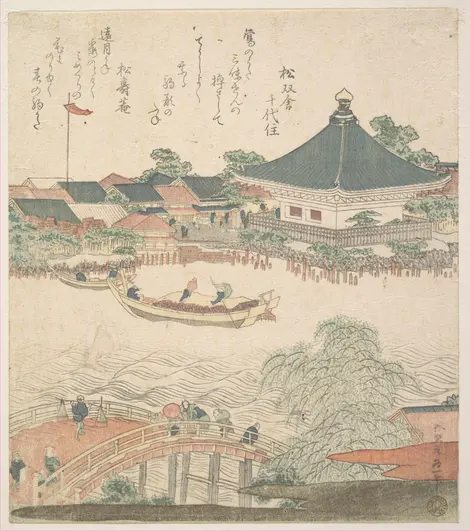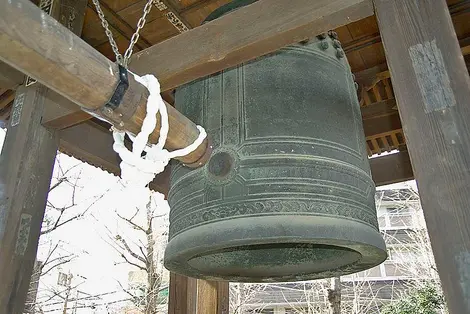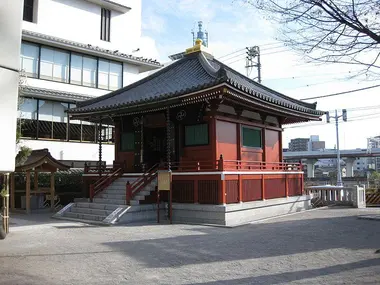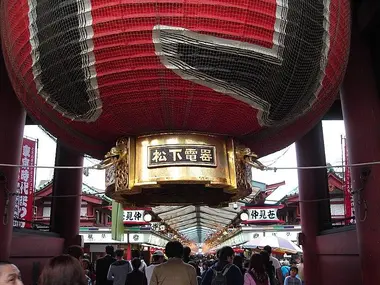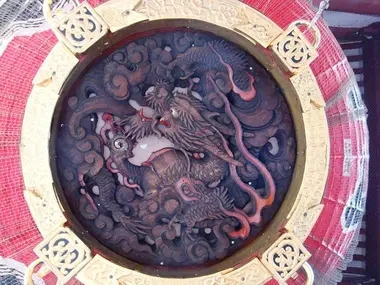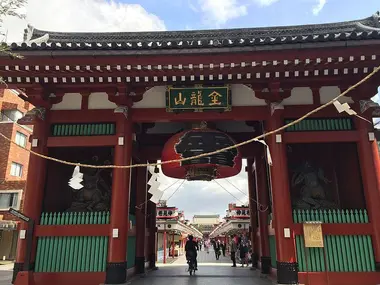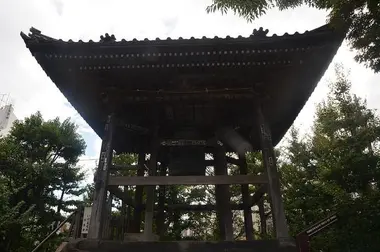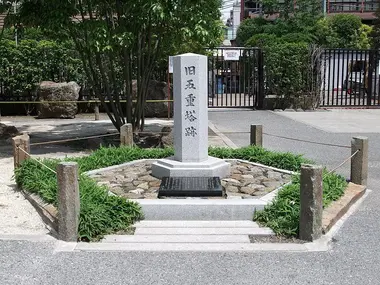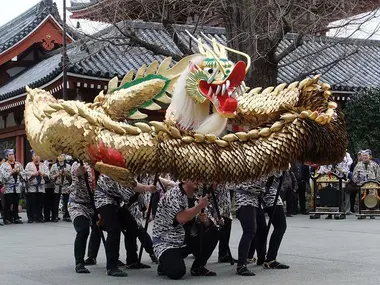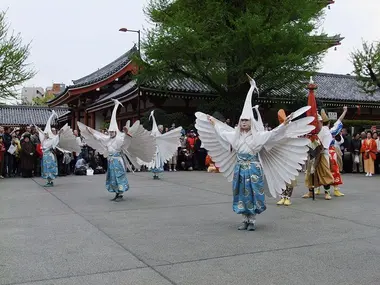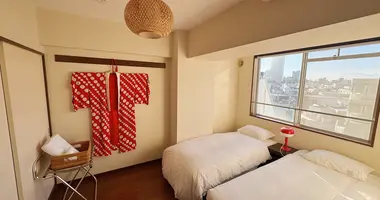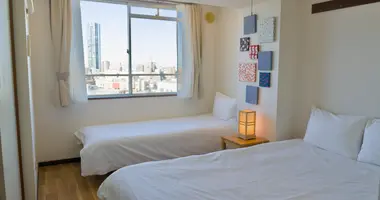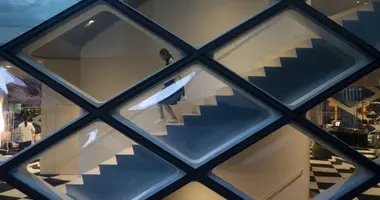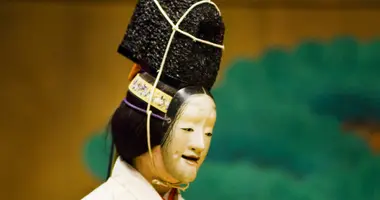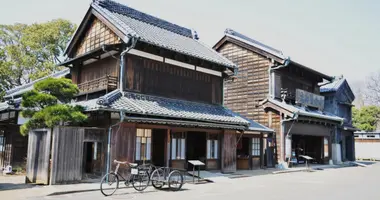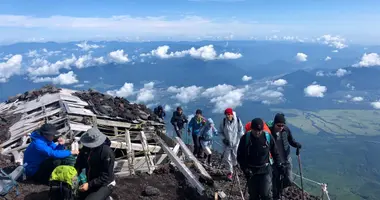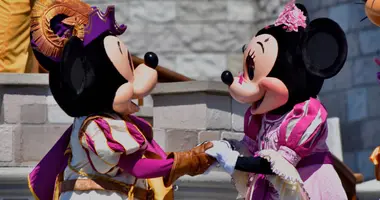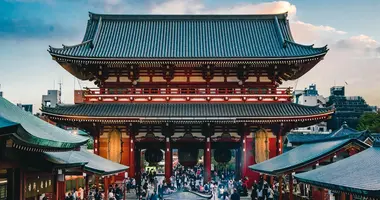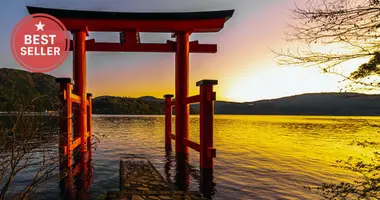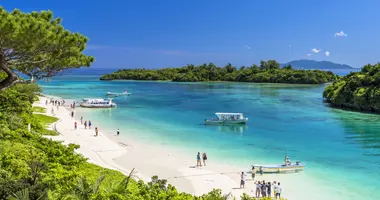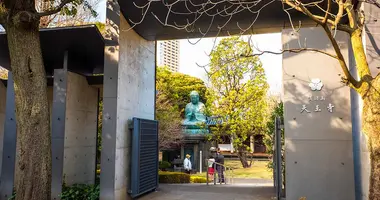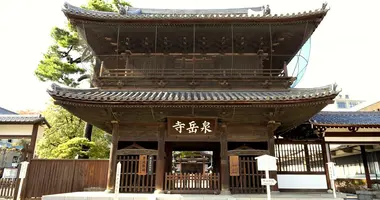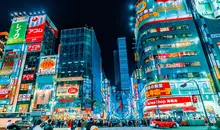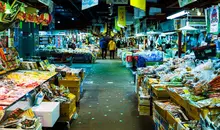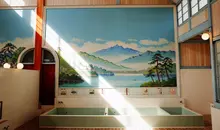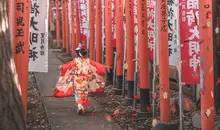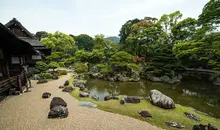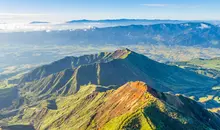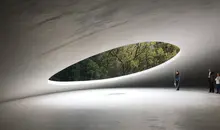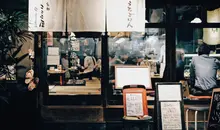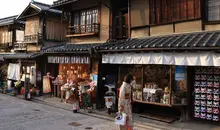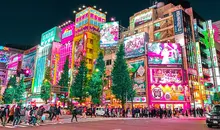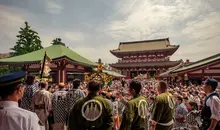The Senso-ji under the magnifying glass 浅草寺の秘密
- Published on : 29/03/2019
- by : S.V.
- Youtube
Sacred secrets
The Senso-ji is one of the essential visits to the Japanese capital. It must be said that the majestic Kaminarimon (Thunder Gate) adorned with its gigantic lantern, the Nakamise-dori shopping street, the Hozomon (treasure room gate), the pagoda, and the hondo have something to seduce visitors. But whether you are a regular or you are going there for the first time, you may miss certain small details that are nevertheless rich in meaning.
This visit of Senso-ji under the magnifying glass tends to make you discover the little stories that make up the big story. Those refractory to history can be reassured. It is in no way intended to deliver a lecture or an exhaustive description of the premises. Simply enjoy this walk which highlights anecdotes or small events related to the famous temple of Asakusa.
1. Komagatado
This somewhat special visit to Senso-ji begins away from it! Just a few minutes from the gleaming complex, there is a small temple of oh so important historical value: the Komagatadô.
It is established at the exact spot where the golden statue of Kannon, the origin of Senso-ji, was discovered. In 628, Hamanari and Takenai Hinokuma, two brothers fishing in the waters of the Sumida River, brought up in their net the precious sculpture to which a temple was quickly dedicated. The Komagatado, founded in the 10th century, commemorates this discovery.
Located on the banks of the river, this place, which has become sacred, was until 1742 the docking point for pilgrim boats coming to visit Senso-ji. Carry on this tradition and make Komagatado the first stop on your visit to Senso-ji!
2. The Kaminarimon Lantern
Represented many times by the greatest ukiyo-e artists, the giant chôchin (folding lantern) of the Kaminarimon is a significant symbol of Senso-ji.
It must be said that with its XXL dimensions, this lantern in washi paper and bamboo does not go unnoticed. Measuring 3.9 meters high and with a diameter of 3.3 meters, the luminaire weighs nearly 700 kg!
Although photographed from every angle by thousands of visitors each year, one detail may escape you: a golden insert indicating its affiliation with the large electronics firm Panasonic!
Since 1960, the Japanese firm has offered a new lantern to Senso-ji every ten years, according to the wishes of Konosuke Matsushita (1894-1989), its founder.
It was on this date that the Kaminarimon, destroyed by fire in 1895, was rebuilt. The businessman was solicited by the chief priest who was looking for financial support. Particularly sensitive to the widest possible dissemination of Japanese culture, Matsushita commits his firm to the restoration of this priceless heritage.
From then on, Panasonic entrusted the realization of the gigantic chôchin to the Kyoto workshop Takahashi Chôchin Kabushiki Kaisha. The current lantern, installed in November 2013, is the 5th lantern sponsored by Panasonic.
3. The Bell of Time
In the 17th century, the poet Matsuo Basho (1644-1694) wrote: "In the mist of cherry blossoms, a sound rings. Ueno? Asakusa?" (Hana no kumo kane wa ueno ka asakusa ka).
This haiku then immortalized the "time bells" scattered around the city that informed all the citizens of Edo of the time by ringing six times a day.
Know that the bell of time or toki no kane of Asakusa, located in the enclosure of Senso-ji, always rings!
Installed on a small hill where the Bentendre also sits, a small temple dedicated to Benzaiten, the bell is now heard only at 6 am.
If you are not very early in the morning, only one other opportunity to listen to the pure sound of the toki no kane is offered to you: to attend the New Year celebration ceremony on December 31st.
That evening, the bell rings 108 times to signify the start of a new year full of promises in front of a large number of faithful. And there, impossible not to hear because 40 min is necessary to overcome the 108 bells!
4. The stele of the old pagoda
The current Senso-ji pagoda is a steel and reinforced concrete reconstruction from 1973; the previous one having been destroyed by the air raids that hit the capital during the Second World War.
Measuring 33 meters high, the new five-story pagoda is erected in the western part of the compound of the complex whereas it previously stood on the eastern side.
Today, an engraved stele also marks the original location of the building.
But the history of the Senso-ji pagoda is much more complex than it seems. Ancient sources indeed mention the existence of two pagodas from the 10th century: one, 5 stories high to the east, and the other 3 stories to the west. Both were destroyed by a fire at the beginning of the 17th century.
In 1648, Shogun Tokugawa Iemitsu only ordered the reconstruction of the 5-story tower. The pagoda will then remain in the east for another 400 years.
5. Sacred dances
In addition to the multiple rebuilding of its buildings, Senso-ji has given new life since the 1960s to traditional dances that have sometimes fallen into oblivion.
Notable among these is the golden dragon dance or kinryu no mai. Celebrated every March 18 and October 18, this dance features the dragon who is said to have fallen from the sky into the pine forest of Asakusa shortly after the discovery of the statue of Kannon in the waters of the sumidagawa.
To handle the colossal dragon, 18 meters long and weighing 88 kg, eight carriers are needed!
In mid-April and every November 3, another animal comes to life and dances throughout Senso-ji: the white heron. The shirasagi no mai dance was performed in the Heian period (794-1185) in Kyoto. It was revived by temple authorities in 1968.
In this performance, the dancers wear sumptuous immaculate costumes. Listen closely, you could almost hear the rustling of their outstretched wings.
- Also discover: Sanja Matsuri
Address, timetable & access
Address
Timetable
Get off at Asakusa Station of Tokyo Metro Ginza Line, Tobu Isesaki Line, Toei Asakusa LinePrice
FreeAccess
Open daily from 6 am to 5 pm.
